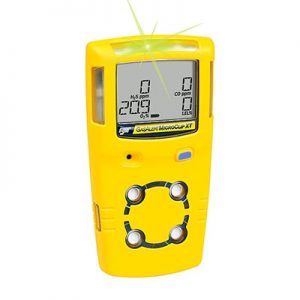Many industries depend on having reliable and accurate portable gas detection monitors. This includes food and beverage producers, industrial manufacturers, and petrochemical plants. They all need gas detection both to help identify leaks and to aid with the safety of personnel and equipment. After all, accidents are often preventable. Power stations and sanitation and sewage facilities also rely on gas sensors and monitors. When it comes to working with combustible fuels or other hazardous environments, you really can’t be too careful. Having a better understanding of the differences between diffusion and pumped gas detection could prove to be quite helpful.

Gas Detection
Gas detection tends to vary considerably from one application to the next. If you work with fossil fuels, such as coal, charcoal, gasoline, diesel, or other petrochemicals, you’ll want to be aware of carbon monoxide. Sanitation and sewage workers are likely to be concerned about methane, hydrogen disulfide, and ammonia. This is why your gas detection monitors always have to be suited to the local environment. There is no one-size-fits-all approach when it comes to gas monitoring and safety.
There’s a constant debate over whether diffusion or pumped gas detection is better, but the real answer is that it depends. Often, it’s not immediately clear what the differences are between these devices, so it’s difficult to determine the instrument that would be best suited for your specific application. However, a brief breakdown should help to answer many of the most common questions, so you can narrow down your options.
Diffusion
A diffusion system relies on the principle of the “spreading out” of molecules and gases in the atmosphere. As these gases spread and expand, higher and lower concentrations of certain gases are able to be identified. Gases tend to shift from higher concentrations to lower concentrations when in the open air. These devices can’t be used remotely, but they do accurately identify what’s present in a given location. For a common and practical example, you might consider a single gas monitor, such as a portable O2 monitor which can be worn on the chest.
An appropriate application for a diffusion gas detector would be for employees who are active in high-risk areas. This makes sense in the case of transportation or other processes that demand hands-on work. Additionally, stationary monitors that continuously detect gases in a given location often rely on diffusion.
Pumped Gas
Pumped instruments are equipped with a built-in sampling pump. This means that the device is constantly drawing in gases. Hoses may be connected to extend the reach. In practice, you’re able to take a measurement from a relatively safe distance. As a result, you’re able to better assess any hazards and can determine that sort of protective equipment you might need before entering a given area.
This is appropriate when you’re unaware of the hazards in a given space. Pumped gas detectors are also used for tanks, sewers, and crawlspaces, or other instances when access is limited or not advised. Suctioning is also used to acquire samples for biogas analysis or before entering a tank or facility.
As you can see, there are appropriate applications for both diffusion gas detectors and pumped gas detectors. The proper device is best determined by the use-case presented by a given occasion and location. Whatever the demands, reliable portable gas detection equipment is often crucial. Contact DOD Technologies, Inc., at 815-680-6086 if you have any questions or if you would like a recommendation.







